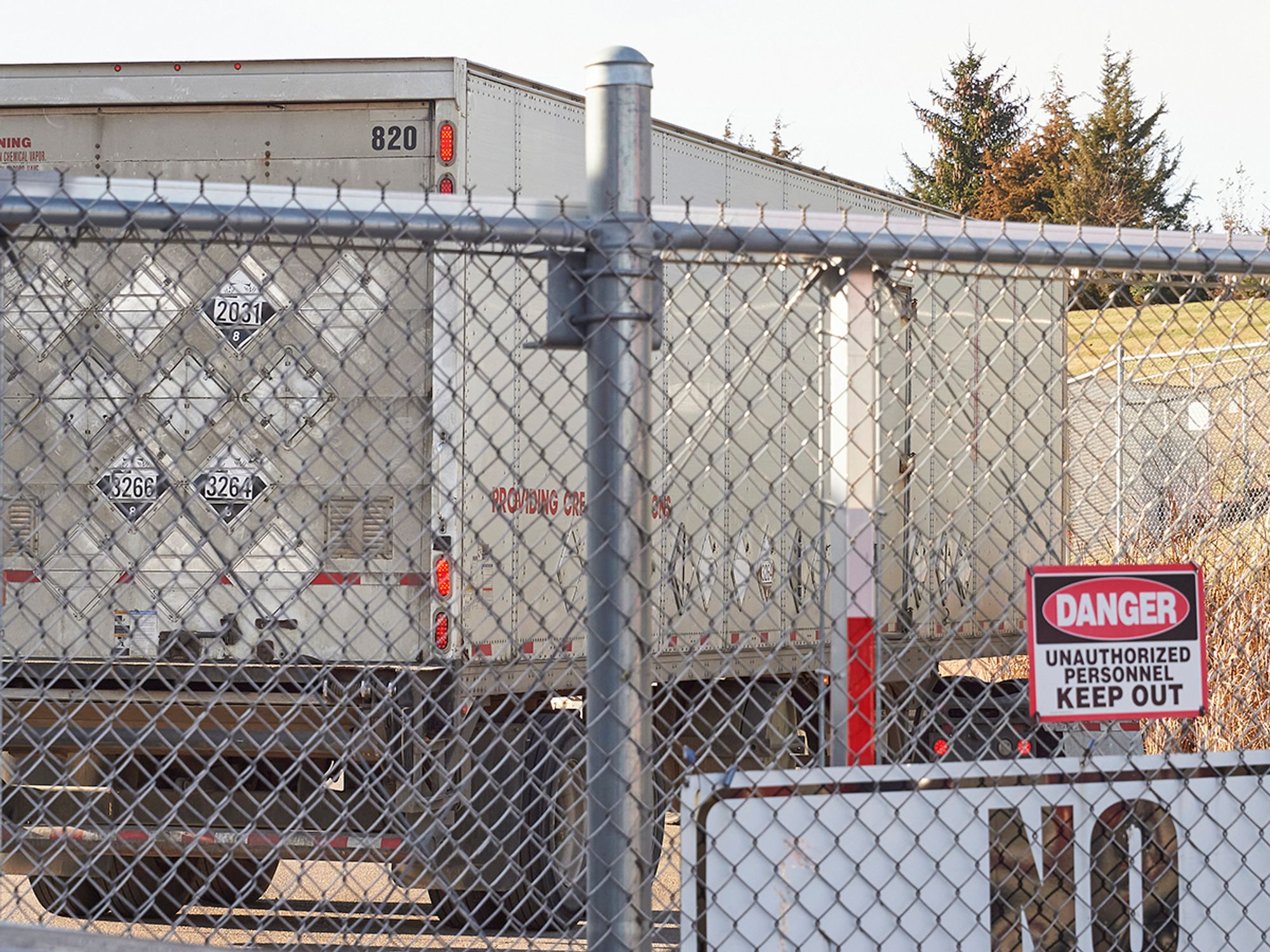Who needs a hazmat security plan?

- Entities who carry and transport certain (often large) quantities of particular hazardous materials must develop and adhere to a transportation security plan.
- Exemptions from the security plan requirements include most farmers and those offering for transport or transporting combustible liquids.
- Additional security plan requirements exist for rail transportation depending on the type and quantity of the materials being transported.
Companies that offer for transportation or transport any of the following hazardous materials must create and follow a security plan:
- Any quantity of a Division 1.1, 1.2, or 1.3 material;
- A quantity of a Division 1.4, 1.5, or 1.6 material requiring placarding;
- A large bulk quantity of Division 2.1 material;
- A large bulk quantity of Division 2.2 material with a subsidiary hazard of 5.1;
- Any quantity of a material poisonous by inhalation;
- A large bulk quantity of a Class 3 material meeting the criteria for Packing Group I or II;
- A quantity of desensitized explosives meeting the definition of a Division 4.1 or Class 3 material requiring placarding;
- A large bulk quantity of a Division 4.2 material meeting the criteria for Packing Group I or II;
- A quantity of a Division 4.3 material requiring placarding;
- A large bulk quantity of a Division 5.1 material in Packing Groups I and II; perchlorates; or ammonium nitrate, ammonium nitrate fertilizers, or ammonium nitrate emulsions/suspensions/gels;
- Any quantity of organic peroxide, Type B, liquid or solid, temperature controlled;
- A large bulk quantity of Division 6.1 material;
- A select agent or toxin regulated by the Centers for Disease Control and Prevention (CDC) under 42 CFR part 73 or the United States Department of Agriculture (USDA) under 9 CFR part 121;
- A quantity of uranium hexafluoride requiring placarding;
- International Atomic Energy Agency (IAEA) Code of Conduct Category 1 and 2 materials including highway route controlled quantities or known radionuclides in forms listed as RAM-QC by the Nuclear Regulatory Commission; or
- A large bulk quantity of Class 8 material meeting the criteria for Packing Group I.
Exceptions for hazmat security plans
Most farmers are exempt from the security plan requirements. If a farmer makes less than $500,000 a year from selling agricultural products, and their transportation activities meet the following conditions, they’re exempt from the security plan requirements:
- The materials are moved by highway or rail,
- The transportation directly supports farming operations, and
- It all happens within 150 miles of those operations.
Also, certain combustible liquids are not subject to these security plan rules. If the combustible liquid isn’t classified as a hazardous substance, hazardous waste, or marine pollutant, and it’s shipped in non-bulk packaging, then it’s excepted from the Hazardous Materials Regulations.
Even when combustible liquids are considered hazardous substances, wastes, or marine pollutants, the security plan requirements in Part 172, Subpart I still don’t apply if they’re shipped in bulk packaging. (173.150[f])
Additional requirements for rail
Rail carriers that transport certain hazardous materials have extra safety and security planning requirements. These apply if you're moving:
- A highway route-controlled quantity of Class 7 (radioactive) material,
- More than 5,000 pounds of Division 1.1, 1.2, or 1.3 explosives in a single railcar, or
- A bulk package of a poisonous-by-inhalation material.
If you're transporting any of these, here's what you need to do:
- Review last year’s shipments to gather data on what was moved.
- Analyze the safety and security risks of the routes used.
- Identify other possible routes you’re authorized to operate on.
- Choose the best route based on your analysis.
- Complete all of this by the end of the following calendar year.
Each rail carrier must ensure that its safety and security plan includes all of the following:
- A process for working with shippers and receivers to limit how long materials are stored during transit.
- Steps to prevent unauthorized access during storage or delays.
- Measures to reduce risks to nearby communities when materials are stored in transit.
- A plan for how to respond if the threat level increases while materials are in transit.
- A procedure for notifying the receiver if there’s a significant delay.
Rail carriers must keep all this information accessible at their main office and hold onto it for at least two years.
